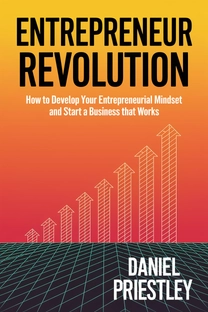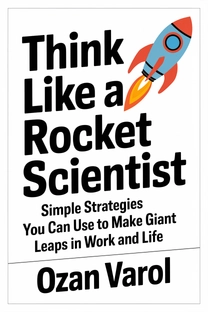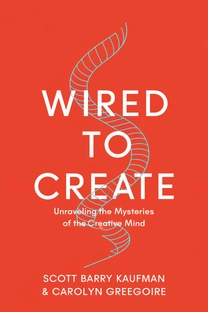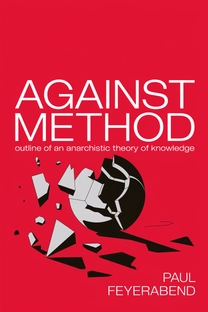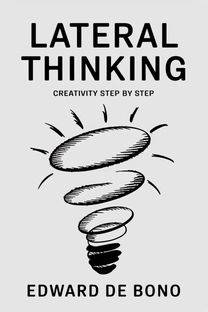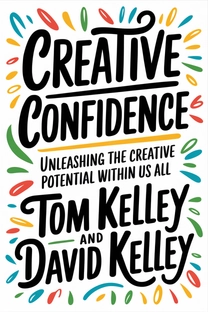
Pieces of the Action
by Vannevar Bush
Brief overview
This book describes how a major figure in twentieth-century science and technology navigated the challenges of wartime research, institutional leadership, and large-scale collaborations. It explores firsthand anecdotes and lessons on innovation, government partnerships, and the long-term impact of strategic planning. By reading it, you can expect a unique insider’s perspective on how modern research and development practices took shape under immense pressure.
Introduction
The story begins with the author’s entrance into a world forever shaped by major wars and emergent technologies. Instead of narrowing in on the well-known anecdotes of radar, atomic bombs, or penicillin, this narrative spotlights lesser-known but equally powerful breakthroughs like the proximity fuze and the amphibious DUKW vehicle. Through personal recollections, the author lays out how large-scale teamwork can flourish in urgent times.
With a front-row seat to high-level decision-making, the book highlights how avid curiosity, strategic planning, and trust across multiple sectors forged a new blueprint for research and invention. Throughout, we see how crises bring people and institutions together, sometimes awkwardly, but ultimately forging alliances that shape national policy and global technological progress.
This introduction also underscores a key theme: though war provides the emergency context, the lessons extend to peacetime challenges. Industrial labs, universities, and government departments can work in sync, as long as leaders foster autonomy, shared responsibility, and a culture that encourages creative risk-taking.
Over the next chapters, the narrative shifts from the battlefield to the laboratories, from private boardrooms to congressional committees—revealing that innovation isn’t just an idea but a holistic process involving financing, engineering, promotion, and regulation. This sets the stage for a story about how bold visions are made real.
War, Science, and the Need for New Structures
When global conflict loomed, traditional means of doing research couldn’t keep up with the scale of the threat. Disconnected military bureaus, academic labs, and private businesses all held vital puzzle pieces but rarely aligned. The result was potentially life-saving science lost in bureaucracy. Then came new organizations, specifically created to accelerate and unify these efforts.
The narrative introduces major World War II–era institutions like the National Defense Research Committee and the later Office of Scientific Research and Development. They were remarkable for their speed, minimal red tape, and clarity of mission. Through these entities, bright minds from academia joined forces with industry and the military, pooling expertise in service of urgent problems.
Among the success stories were developments in submarine detection, where improved sonar, radar, and later magnetic detection devices tipped the balance at sea. These projects showcased the strength of collaborative structures: project leads could muster scientists, test prototypes rapidly, and scale up production with minimal delays. Brave decisions, such as tying large budgets to flexible contracts, helped scientists on the front lines.
Behind each calculated risk was the idea that a crisis demanded unity. By cutting across civilian, academic, and military boundaries, these new structures showed how lean, empowered teams could achieve breakthroughs that older models might have stalled. War was the trigger, but the lessons would outlast the conflict by reshaping how research was organized postwar.
What is Pieces of the Action about?
"Pieces of the Action" offers an insightful exploration into the life and accomplishments of Vannevar Bush, one of the most influential figures in 20th-century science and technology. Through personal anecdotes and detailed recollections, the book delves into the intricacies of leading wartime research efforts, building resilient institutional structures, and fostering cross-sector collaborations that reshaped the landscape of innovation. It uncovers how modern R&D practices evolved under relentless pressure, emphasizing the enduring influence of Bush's strategic vision.
The narrative resonates as a compelling testament to the power of human ingenuity when guided by pragmatic leadership. "Pieces of the Action" captures the essence of wartime innovations that laid the groundwork for today's technological advancements. Readers gain a profound understanding of how an empowered organization can fast-track breakthroughs, the pivotal role of collaboration between universities, government, and industry, and the unforeseen and lasting impacts of early visionary concepts akin to today's digital networks.
This book is not just historical documentation; it serves as a crucial reminder of the perennial value of strategic foresight and the interconnectedness of scientific endeavors. It empowers readers to appreciate the dimensions of innovation that transcend wartime exigencies, touching on themes such as leadership dynamics, the evolution of patent systems, and the transformative influence of mentorship and education.
Review of Pieces of the Action
"Pieces of the Action" is a profound exploration of the mechanics behind twentieth-century technological advancements and the minds that propelled them. A notable strength of Vannevar Bush's narrative is its rich, firsthand insights into the wartime innovations that shaped contemporary research frameworks. Its unique strength lies in seamlessly integrating personal anecdotes with broader systemic analysis, offering readers both a micro and macro perspective on scientific development.
One of the book's standout aspects is its emphasis on the power of collaboration. Engaging storytelling illustrates how individuals from diverse backgrounds can craft extraordinary results when conventional hierarchies are dispensed with—a lesson readily applicable to modern organizational structures. Bush's discourse on the patent systems and his recounting of the 'memex' demonstrate his visionary thinking and offer readers a lens into the future implications of technology and information structures.
The writing maintains a compelling balance between technical depth and narrative elegance, making it accessible to both laypersons and professionals. While rich in technical insights, the prose remains approachable, ensuring sustained engagement across a varied audience. Readily adaptable, the insights discussed extend broad practical applications for educators, leaders, and policymakers. Bush's reflections on stretching educational paradigms to nurture future innovators serve as a timely reminder of the importance of holistic teaching practices in germinating unyielding curiosity.
Ultimately, "Pieces of the Action" is an indispensable read for anyone vested in understanding the confluence of history and technological progress. Its candid, introspective tone, combined with expert guessing on future advancements, provides a deeply enriching experience. I highly recommend it for its ability to inspire aspiration and impart critical lessons.
Who should read Pieces of the Action?
- Tech Industry Leaders: Individuals in leadership roles within technology sectors stand to gain insights from Bush's exemplary approaches to innovation and collaboration across domains.
- Historians and Academics: Those interested in the historical context of innovation and how institutional mechanisms can catalyze scientific breakthroughs.
- Educators and Mentors: Teachers and mentors can apply Bush's lessons on adaptable, experiential learning models that foster creativity and critical thinking.
- Policy Makers: Decision-makers can extrapolate modern policy applications from Bush's governance strategies of research initiatives during wartime.
- Aspiring Innovators: Individuals aspiring to be innovators can draw inspiration and practical foresight from Bush’s firsthand narratives of overcoming blockages to pioneer new breakthroughs.
About the author
Book summaries like Pieces of the Action
Why readers love Mindleap
10-Minute Book Insights
Get the core ideas from the world's best books in just 10 minutes of reading or listening.
Curated For You
Discover your next favorite book with personalized recommendations based on your interests.
AI Book ExpertNew
Chat with our AI to help find the best book for you and your goals.
Reviews of MindLeap
Love how I can get the key ideas from books in just 15 minutes! Perfect for my busy schedule and helps me decide which books to read in full.
Alex R.
The summaries are incredibly well-written and the audio feature is perfect for my commute. Such a time-saver!
Jessica M.
Great app for personal growth. The insights are clear and actionable, and I love how they capture the essence of each book.
Chris P.
The app is beautifully designed and the summaries are top-notch. Definitely worth every penny!
Sarah K.





